In today’s fast-moving broadcast environment, content is no longer limited to traditional linear TV. Broadcasters are juggling multiple screens, geographies, formats and workflows from live feeds, OTT, social media snippets, archives, to on-demand libraries. To stay agile, efficient, and competitive, many are shifting from siloed systems and fragmented media operations toward a centralized, unified platform approach.
This is where a solution like EBIMS comes into focus: offering broadcasters a streamlined way to ingest, manage, deliver and monetize all media assets from a single control point. In this article we explore why that move is happening, how it plays out operationally, and what benefits broadcasters can expect from EBIMS as the enabler.
1. The pressure on broadcasters today
Several forces are pushing broadcasters to rethink their media management strategy:
• Format & channel explosion
With audiences accessing content on smartphones, connected TVs, tablets, and web, the number of channels and formats is growing rapidly. Legacy systems built for one screen or one workflow struggle to scale.
• Asset volume and complexity
Video libraries are ballooning: multiple versions, languages, archives, metadata tags, rights, repurposed clips. According to one industry guide, a media-asset-management (MAM) system must handle ingestion, metadata, search, workflow automation, and version control.
• Siloed workflows
Often departments operate in isolation production, archive, delivery, social, and OTT. Each may have different tools, storage, and metadata schemes. That leads to duplication, inefficiency, and risk of inconsistencies.
• Global and remote teams
Content is sourced and consumed globally. Teams may work remotely, across time zones. Centralized access becomes a necessity rather than luxury.
• Rights, licensing and compliance
As content flows into new channels, ensuring correct licensing, usage rights, tracking becomes more intricate. Many legacy systems weren’t built for modern multi-platform rights management.
• Cost, speed and agility
Expectations for faster turnaround, repurposing of content, multi-platform delivery and monetization demand more streamlined operations.
Given these pressures, broadcasters are increasingly seeking platforms that unify asset management, workflow orchestration, delivery and analytics, rather than stitching multiple tools together.
2. What does “centralized media management” mean?
When we talk about centralized media management for broadcasters, we mean:
- Single repository / “single source of truth” for all media assets (video, audio, graphics, metadata, versions)
- Unified metadata and cataloguing which enable discoverability, reuse and tracking
- Integrated workflows across ingest → production → review → approval → delivery (linear, OTT, social)
- Role-based access and global collaboration so teams across locations can work on the same system
- Rights & version control built in, so you know what version is approved where, and what usage rights exist
- Analytics & insights on asset usage, cost, ROI, repurposing
- Scalable architecture, ideally cloud-enabled, to handle growing volume and multi-platform delivery
A unified platform approach contrasts sharply with a patchwork of tools: a local storage here, a separate MAM there, a review tool somewhere else, manual hand-offs and spreadsheets. Centralization seeks to reduce friction, duplication, risk, and cost.
To reinforce with a video:
This shows how one unified workflow approach helps broadcast journalists go from assignment to on-air through a cohesive platform.
3. Why broadcasters are migrating to platforms like EBIMS
Let’s map the reasons for specific benefits and see how EBIMS fits.
Benefit A: Operational efficiency & speed
- With a unified platform, time-consuming manual steps (transfers, reconciling versions, locating assets) shrink.
- Media teams spend less time hunting videos or graphics and more time producing.
- EBIMS enables ingestion into a central library, tagging with metadata, and delivering across channels with minimal duplication.
- With consistent metadata and workflows, turnaround for repurposed clips (e.g., social version of broadcast clip) is far quicker.
Benefit B: Cost-control & risk reduction
- Lower storage/management costs by avoiding multiple silos and redundant assets.
- Version control reduces errors (wrong version aired).
- Rights management built into the platform avoids “unauthorized use” risk.
- Centralized monitoring and analytics let you track asset use, cost per asset, ROI on reuse.
Benefit C: Improved collaboration and oversight
- Teams in different regions or time zones can access the same platform.
- Producers, editors, compliance, and marketing all work off the same repository.
- EBIMS allows role-based permissions, so you control who can view/edit/distribute.
- With everything in one place, oversight of what’s live, what’s archived, what’s delivered is easier.
Benefit D: Increased content reuse & monetization
- With searchable, centralized libraries, assets are easier to find and reuse, e.g., highlights, clips, and archival content.
- Faster repurposing means broadcasters can respond to current events and trending stories more quickly.
- Analytics provide insight: which assets are used most often, which formats drive engagement, enabling smarter content strategy.
Benefit E: Futureproofing and scalability
- As broadcasters expand into OTT, streaming, FAST channels, mobile, social, the underlying platform must scale.
- Centralizing today avoids building multiple systems tomorrow.
- EBIMS is built with modularity and scale in mind: one platform to support current and future workflows.
- As one guide notes: the transition from MAM to cloud-native unified platforms is underway.
- Also reinforced by industry examples: unify media logistics and operations to meet modern demands.
Here’s another relevant video illustrating unified media management in practice:
4. How EBIMS supports a broadcaster’s transition
Putting theory into practice, here are some ways EBIMS helps broadcasters make the shift:
1. Ingest & cataloguing
EBIMS supports multiple ingest sources (live feeds, file uploads, remote locations) and tags assets with rich metadata to make them searchable and reusable.
2. Central asset repository
All formats, versions, and languages are stored on one platform. Duplication reduced; asset tracking improved.
3. Workflow automation
The platform orchestrates workflows: e.g., auto-transcode for social formats, push to delivery channels, user review/approval flows. That means fewer manual handoffs.
4. Multi-platform delivery
EBIMS enables delivery to linear broadcast, OTT platforms, social media, and mobile apps from the same repository with minimal duplication of effort.
5. Rights & version control
Track which version is approved, where it was used, and what rights/licensing applies. Useful for compliance and audit.
6. Analytics and insights
Monitor which assets are performing, which formats are being reused, asset lifecycle cost. Use that information to create future content creation and strategy.
7. Scalable architecture
EBIMS’s modular design supports growth: more channels, more geographies, more formats without needing completely new systems.
8. Centralized governance and cross-team collaboration
With role-based access, global teams can collaborate, review, approve, and distribute all from one system. This eliminates isolated silos.
5. Key considerations for implementation
Migrating to a unified platform like EBIMS is not simply a “lift and shift”. Here are key factors broadcasters need to address:
- Metadata governance: Ensuring consistent tagging, naming conventions, taxonomy so assets become searchable and reusable.
- Change management & training: Teams used to legacy systems will need training and buy-in to adopt the new unified workflows.
- Integration with existing systems: Most broadcasters have legacy tools. EBIMS must integrate or replace minimal disruption.
- Rights/licensing mapping: Especially if assets have complex rights (regional, windowed, language), the platform must reflect those accurately.
- Scalability and future needs: The chosen platform must not only meet current operations but anticipate future formats/channels.
- Performance & reliability: Downtimes or slow retrieval kill productivity. The platform must have proper architecture and SLAs.
- Cost and ROI: Migration cost needs to be justified by efficiency gains, asset reuse, speed-to-market, and monetization.
- Data migration strategy: Moving existing assets from silos to central repository is often the biggest task planning; clean-up and dedupe is essential.
- Security and compliance: With the central repository comes security responsibility for access controls, audit logs, backup, disaster recovery.
6. Real-world outcomes and broadcaster benefits
When broadcasters move to centralized media management platforms, the outcomes include:
- Faster time-to-air: Repurposing content or launching new channels takes far less time.
- Lower operational cost: Less duplication of infrastructure, fewer manual workflows, reduced storage waste.
- Higher asset utilization: Libraries that were “dark” become searchable and reused better ROI on content creation.
- Greater flexibility: Ability to respond to trends, deliver to new platforms or regions quickly.
- Improved quality control: Version control and approval workflows reduce errors on-air or in social channels.
- Better insights: Knowing what content is engaging and being used enables a smarter strategy.
- Future readiness: Infrastructure ready for OTT, streaming, FAST channels, remote workflows.
These benefits map directly to the capabilities EBIMS brings centralized repository, unified workflows, global collaboration, scalable architecture.
7. Why EBIMS is a strategic choice
Here’s why EBIMS stands out for broadcasters seeking a unified platform:
- End-to-end platform: From ingest to delivery, EBIMS covers the complete workflow, rather than piecing together multiple tools.
- Broadcaster-centric: Designed with the needs of multi-channel, global broadcast operations in mind.
- Scalable and flexible architecture: Supports growth in formats, platforms, geographies without system overhaul.
- Metadata-driven asset reuse: Emphasis on searchability, discoverability and reuse of assets ensuring content libraries become strategic assets.
- Governance and rights management built-in: Ensures compliance and control across regions and platforms.
- Global collaboration capabilities: Role-based access, remote teams, multiple languages useful for broadcasters with international reach.
- Faster ROI: By consolidating systems and streamlining workflows, broadcasters can see tangible operational gains and content of ROI sooner.
In short: EBIMS delivers the unified media management platform approach that the modern broadcaster needs.
8. Next steps for broadcasters
If you’re a broadcaster (or media / entertainment company) considering a move to unified media management, here’s a roadmap:
- Audit your current media ecosystem: Map all asset stores, workflows, delivery channels, bottlenecks.
- Define business goals: Faster time-to-air? Higher asset reuse? Lower cost? More platforms?
- Select metadata taxonomy and governance: Standardize asset naming, tagging, versions, rights.
- Choose the right platform: Ensure feature-fit, scalability, integration capability EBIMS is a strong candidate.
- Plan migration: Clean up legacy assets, deduplicate, migrate high-value assets first, phase rollout.
- Train users and establish workflows: Ensure teams adopt the new system; workflows are documented, responsibilities clear.
- Measure impact: Track metrics asset reuse rates, turnaround times, cost savings, error reduction.
- Iterate and expand: Once the core is stable, expand delivery channels, content types, global operations.
Conclusion
The broadcasting world is evolving at a rapid pace; more platforms, more formats, more geographies, and more audience demands. In this landscape, fragmented, siloed media operations are no longer viable. Broadcasters need centralized, unified platforms that give them control, flexibility, efficiency, and insight.
That’s precisely why platforms like EBIMS are being adopted: they deliver the foundation for operational excellence, content reuse, monetization, and future-readiness. If managing media assets at scale across channels, regions and formats is your challenge, the path to efficiency lies in centralization.
In short: adopt the unified platform, free your teams, maximize your assets, and focus on storytelling rather than system-sprawl.

